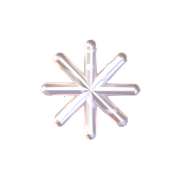-> 2024 23 Apr. – 25 Apr.
Week 12 – Advanced Body Mechanics (Spline)
This week, I’ve been focusing on Spline animation. I’ve found it challenging to control the timing of the character’s slips, especially when the character is moving quickly or the movement feels unexpected. It’s taking me some time to adjust the feet and body movements accordingly.
George shared some really helpful tips with us. One thing he mentioned is that when pushing something heavy, the body needs to move slowly and steadily. The pushing gesture should include a squeezing motion. For the falling part at the end, it’s important to make it dramatic with a dynamic jump, and the body movement should reflect this energy. He also suggested adjusting the length of certain cuts to create a more dynamic sequence.
I also record myself as a reference.
Class session – Blocking Plus
Blocking plus is a fancy way to make your animation better by adding more detailed steps between the main poses. After getting feedback on your first blocking, don’t rush to make it smooth right away. Instead, keep working on it, adding extra poses and adjusting timing until it looks just right.
- Moving holds
A moving hold is when a character isn’t completely still in a pose. Even a tiny bit of movement, like breathing, adds life to the character. In 3D animation, it’s important to avoid making characters look completely still, as it can make them seem lifeless.
–
- Copied Pairs
Copied pairs are a technique used to create moving holds in animation. It involves copying key poses and extending them over a duration to maintain consistency in movement. This helps to create smooth transitions between poses and adds fluidity to the animation.
BREAKDOWNS! & Arcs
- Key > Breakdown > Key
Breakdowns in animation are crucial poses that bridge the gap between two key poses, illustrating the movement along an arc. These breakdowns define the curve of the motion, distinguishing between amateur and professional animation.
Planning out arcs in advance and being open to adjusting them mid-way can greatly enhance the overall quality of your animation.

Class session – Spline
Spline
We finished blocking plus with all our keys, breakdowns, and moving holds. Now, it’s time for the tricky spline phase. Sometimes, things may not look as good when we switch to spline, but if we’ve added enough detail, cleanup should be easier, focusing on refining what we’ve already established.
–
How to clean your shot?
The tutor used an example to illustrate the concept of switching from stepped to spline animation. He likened it to applying window cleaner to a dirty window; spline mode helps us clear away the imperfections. We focus on refining foot placements, body movements like follow-through and overlap, and fine-tuning timing and spacing. To clean up effectively, we start from the root or COG and work outward, ensuring each part is polished in the right sequence to avoid undoing previous work.
- Root/Cog
- Legs/Knees/feet
- Spine
- Neck/head
- Shoulders/arms
- Hands/fingers.
Another useful video we can learn:
- Importance of using reference footage for animation
- Benefits of observing real-life movements
- Enhancing authenticity and believability in animations
- Examples and demonstrations showcasing the effectiveness of reference footage
- How reference footage can guide the creation of natural and expressive animations
In this video, the importance of using reference footage in animation is emphasized. The presenter explains how studying real-life movements can enhance the authenticity and believability of animations. Through examples and demonstrations, viewers are shown how reference footage can guide the creation of natural and expressive character animations.
This video provides valuable insights into the importance of using reference material, such as images and videos, in character design. By studying real-life references, designers can enrich their creations and make them more authentic and believable. Personally, I found the practical examples in the video particularly helpful in understanding how to effectively incorporate reference material into my character design process.
